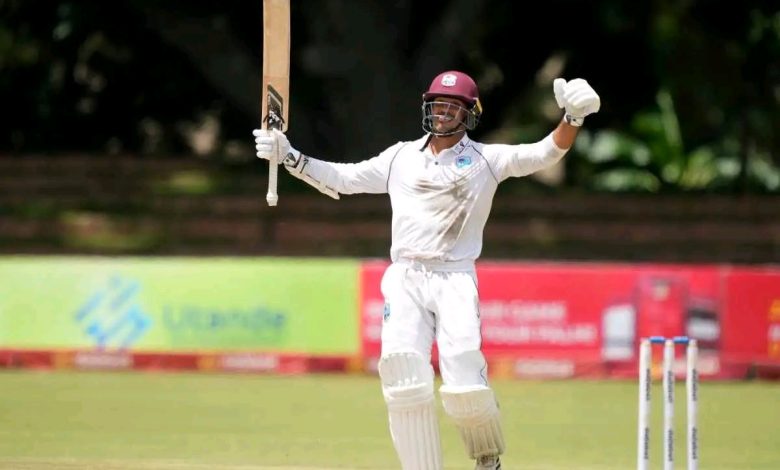CWI DROPPED GUYANESE BORN AND WI OPENING BATSMAN TAJNARINE CHANDERPAUL AFTER PLAYING 10 TEST MATCHES WITH A BATTING AVERAGE OF 33.00 BUT WENT ON TO PICK JOHN CAMPBELL , LOUIS, KING , ALL THREE IS RANK BELOW TAJ INTERNATIONAL BATTING AVERAGE.

Cricket West Indies (CWI) recently made the controversial decision to drop Guyanese-born and West Indies opening batsman Tagenarine Chanderpaul after just 10 Test matches, despite a respectable batting average of 33.00. This move has raised eyebrows among cricket fans and analysts, especially considering the players chosen ahead of him – John Campbell, Zachary McCaskie, and Tagenarine’s fellow Jamaican, Kirk McKenzie – all of whom have Test batting averages significantly lower than Chanderpaul’s.
Chanderpaul, son of legendary West Indies batsman Shivnarine Chanderpaul, made his Test debut in November 2022 and showed promise early in his career, including a memorable century against Zimbabwe and consistent performances against tougher oppositions like Australia and South Africa. While not flashy, his technique and temperament – hallmarks of a classical Test opener – offered much-needed stability at the top of the order for the West Indies, a team that has struggled with opening partnerships in recent years.
However, the CWI selectors appear to have taken a different approach by opting for players with either more aggressive batting styles or perceived “potential,” even if their performances do not currently justify selection over Chanderpaul. John Campbell, for instance, has had multiple opportunities in the past, accumulating a Test batting average under 25 across 20 matches, and has struggled with consistency and discipline at the crease. His recall, despite past failures, suggests a puzzling shift in selection priorities.
Kirk McKenzie, another young left-handed batsman, has shown glimpses of promise but is yet to cement his place or deliver consistent performances at the international level. His Test average also lags behind Chanderpaul’s, and while youth and flair are often valued in modern cricket, it’s surprising that experience and a solid average weren’t enough to keep Tagenarine in the mix.
Additionally, Kavem Hodge and Alick Athanaze have been given opportunities ahead of Chanderpaul in recent squads, despite being unproven in the opening slot. Hodge, though impressive domestically, is still adjusting to the international level, while Athanaze has been shuttled across formats without clear role definition.
The decision to drop Chanderpaul raises broader concerns about consistency in selection policy within West Indies cricket. It also hints at possible regional bias or a lack of long-term planning. Test cricket demands patience, both from players and selectors. Dropping a batsman averaging 33 after just 10 matches, especially when others with worse records are being recalled or persisted with, undermines player confidence and suggests a short-sighted approach.
Tagenarine’s exclusion becomes even more perplexing when considering West Indies’ dire need for solid openers who can survive the new ball and build innings. In that context, his steady if unspectacular record should have warranted further backing, rather than being discarded so quickly.
In sum, CWI’s decision to drop Chanderpaul in favor of underperforming alternatives is questionable. It speaks to larger issues in team management, talent evaluation, and regional cricket politics. Only time will tell if this gamble pays off, but early signs suggest that dropping a steady hand like Chanderpaul may prove to be a step backward rather than forward for West Indies Test cricket.





